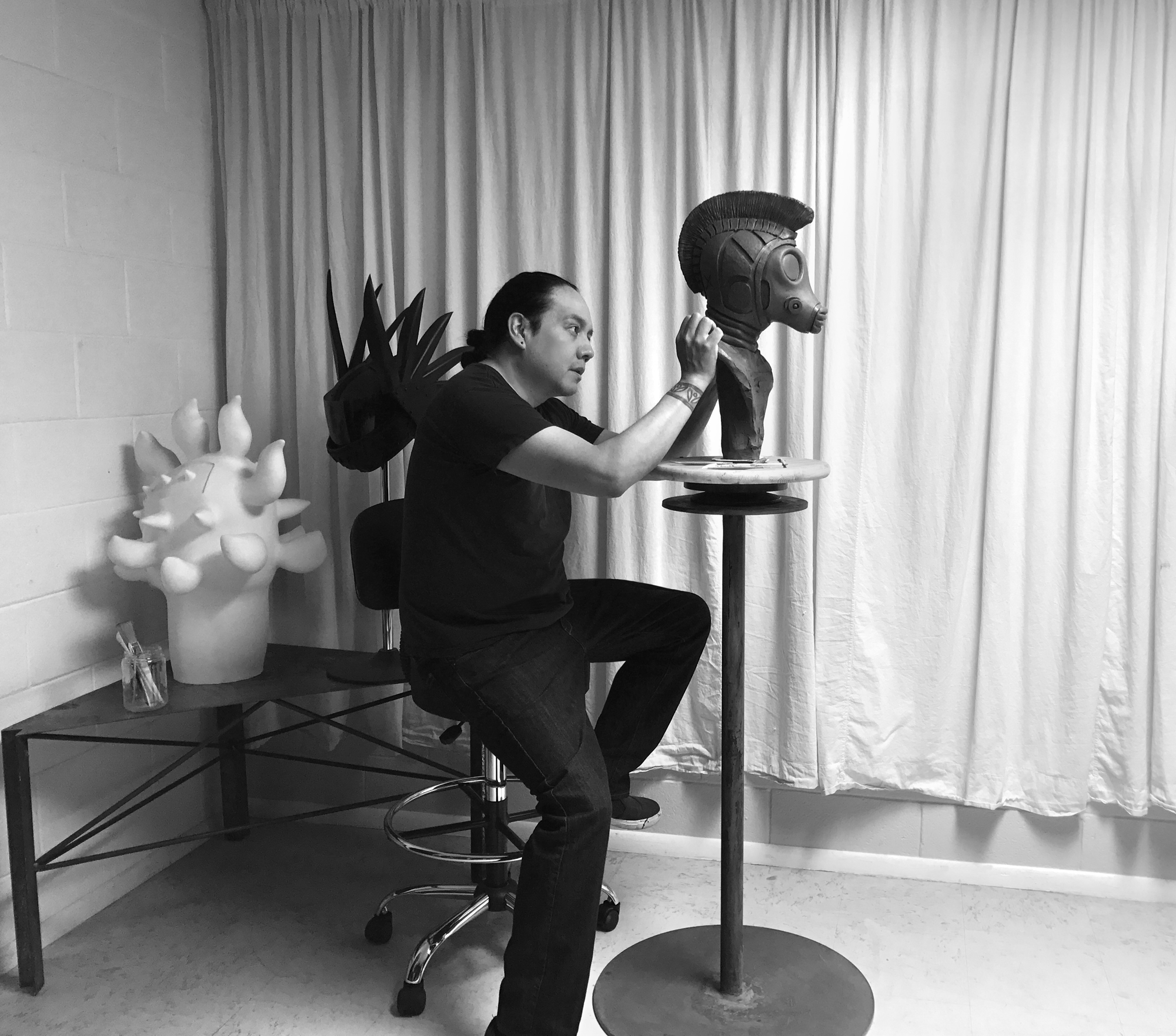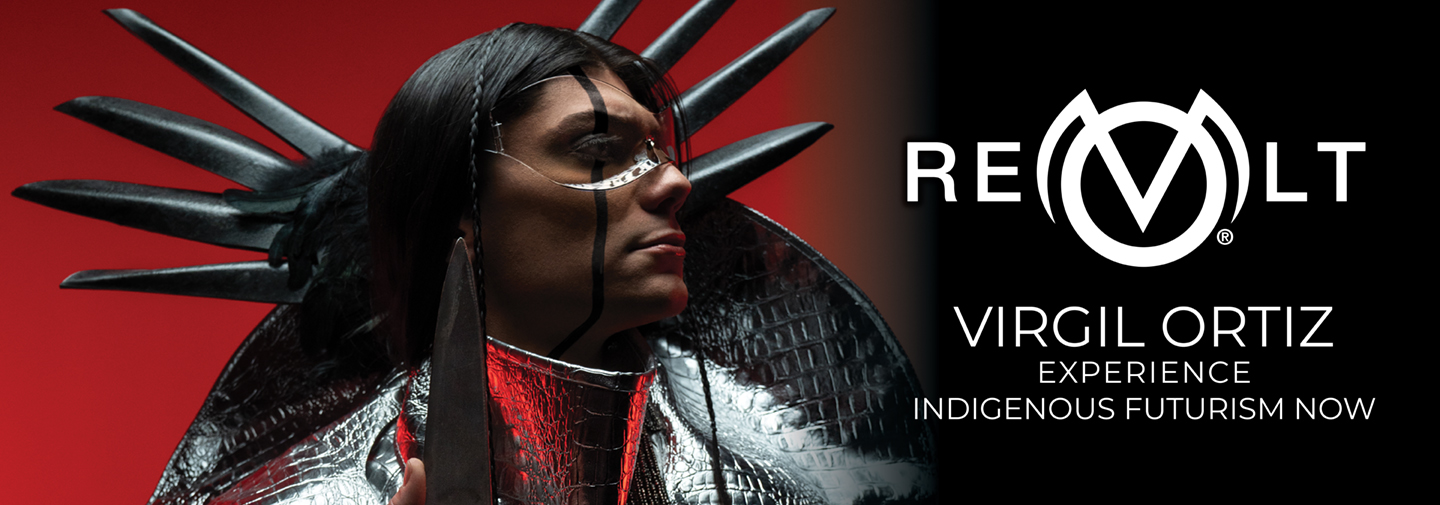
Story
A Revolutionary History of the Future
We caught up with artist Virgil Ortiz of the Cochiti Pueblo, New Mexico. Virgil was the artist behind the new History Colorado Center exhibition REVOLT: 1680 / 2180, a radical reinterpretation of the 1680 Pueblo revolt through the lens of Indigenous futurism.
Q: How do you think about your lineage as an artist?
I’ve been creating with clay since I was six years old. I grew up in Cochiti and was born into a family of potters on my mother’s, Sefarina Ortiz, side of the family. When I’m working, I think a lot about the people who have passed, all the spirits that are all communicating. And that’s why I always say that it’s not my talent that you see in the artwork because I’m a conduit, always asking for guidance from our spirits that have been family members who have passed. I feel like they’re speaking through me.
Q: Why is it so important to keep the Cochiti ceramic techniques alive?
I was lucky to learn about them when I was a kid because it’s a lot of work! It takes a whole year to prepare, so it’s hard to dedicate that much time to going to dig the clay, collect all of the materials, harvest the plants to make our black paint or to go to another part of the pueblo to collect the timber we mix with the clay. And now a lot of the old masters are passing away, so I feel like I’ve been put here on this Earth in this time to make sure that the ceramic traditions continue to that next generation, that they don't die with me.
Q: What made you want to create a history museum exhibit about the future?
Lots of cultures think about time in non-linear ways, and both the old and new ceramics in the exhibition connect us to once-living people and the people who are yet to exist. The hands of people in the past made what we’re seeing, and in that way, they’re still alive. I wanted visitors to experience that connection between past, present, and future and to engage with that idea through art. Being able to use artwork to give life and voice back to the clay is my way of getting that started, of contributing to the ways we spread the knowledge that’s been handed down.
Q: How does it make you feel to see a museum collection like History Colorado’s that contains so much work from your ancestors?
Knowing that it’s in a safe place, that it’s being cared for makes me feel good. I wish, though, that more families got to keep their gifts from their grandmothers, their mothers. There are a ton of treasures like that in each home.
Q: Why was it important to you that more people learn about the Pueblo Revolt?
It’s not taught in schools. It’s not really in our history books. Most Americans don’t know anything about it. When we do shows like in Paris or Prague or Amsterdam, all the Europeans know exactly what I’m talking about, but here we get blank looks. Even people in Santa Fe where most of the revolt took place don’t know anything about what happened. It’s a really important part of our history. Pueblo people joined together, and if they didn’t do that, if they didn’t come together to fight, we wouldn't have the living, creating, thriving culture we have now.
REVOLT 1680/2180: Runners + Gliders, the art installation by Virgil Ortiz, is currently on view at the History Colorado Center in Denver. Learn more about it, or plan your visit, at the exhibit's webpage here.


